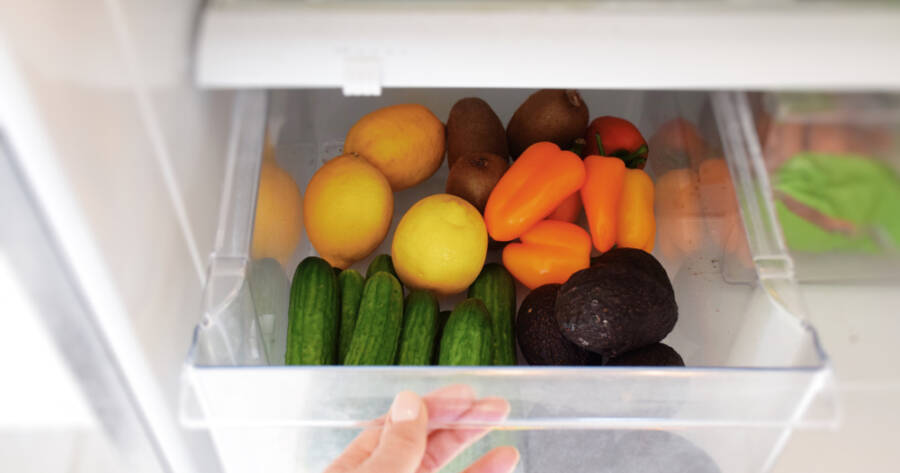Nothing is more satisfying than bringing home a basket of vibrant fruits and crisp vegetables, only to find them losing their freshness too soon. Proper storage can transform the lifespan of your produce, keeping flavors bright and nutrients intact. By understanding how different fruits and vegetables behave after harvest, it becomes easier to slow down spoilage and reduce waste. Fresh food can last far beyond expectations when handled with a little care and attention.
Understand Ethylene and Its Effects
Ethylene is a natural gas released by certain fruits as they ripen, and it plays a major role in how quickly other produce spoils. Apples, bananas, and avocados are high ethylene producers, while leafy greens and berries are highly sensitive to it. When stored together, that invisible gas can accelerate ripening, leading to premature wilting or browning. Even a single apple stored with lettuce can dramatically shorten the greens’ lifespan.
To prevent this, keep ethylene-producing items separate from those that spoil easily. Store apples and bananas in different drawers from greens or cucumbers. Investing in ethylene-absorbing storage bags, filters, or containers can help extend freshness and prevent flavor transfer. Some modern crisper drawers even include ethylene filters built in—an excellent feature for produce lovers.
Moisture Matters: Controlling Humidity
Moisture is essential for freshness but can quickly become a problem if not managed properly. Too little humidity causes vegetables to dry out, while too much can lead to mold, mildew, or rot. Refrigerators with humidity-controlled drawers are ideal for balancing this environment. Set one drawer for high humidity to store leafy greens, herbs, and carrots, and the other for low humidity for fruits like grapes, peppers, and apples.
If your fridge lacks these features, reusable produce bags or damp paper towels can mimic the same effect. A breathable bag around lettuce or celery keeps them crisp without trapping excess water. Adding a small paper towel inside containers helps absorb extra moisture, reducing the chance of sogginess. It’s a small adjustment that can make a surprisingly big difference in freshness and texture.
The Right Temperature for Every Type
Temperature control is crucial for slowing down spoilage. Most vegetables prefer cooler conditions, while some fruits—like tropical varieties—suffer from cold damage if refrigerated too soon. For instance, bananas, pineapples, and mangoes should stay at room temperature until ripe, then can be chilled briefly to extend freshness.
On the other hand, produce like spinach, broccoli, and mushrooms should go straight into the fridge. Labeling storage zones or using clear containers helps you remember which items belong where. Consistent temperatures prevent sudden ripening and ensure that each piece of produce stays at its peak longer.
Smart Washing and Preparation Techniques
It’s tempting to wash produce immediately after shopping, but excess moisture can be a fast track to spoilage. Berries, leafy greens, and herbs, in particular, should be washed only right before use. This reduces bacterial growth and prevents soft spots from forming prematurely.
For long-term storage, consider washing and drying items like carrots, celery, and peppers before placing them in sealed containers. A quick rinse in vinegar water can also eliminate surface bacteria, giving certain vegetables a longer life. Proper drying is essential—air dry or pat gently with a paper towel before storing.
Storage Tools That Make a Difference
The right tools can turn an ordinary fridge into a preservation powerhouse. Airtight containers, glass jars, and produce savers help maintain proper airflow while reducing moisture loss. For herbs, storing stems in a jar of water with a loose bag over the top can mimic a greenhouse effect, keeping them fresh for over a week.
For root vegetables, breathable bags or baskets stored in a cool, dark pantry maintain their texture and flavor. Modern innovations like vacuum-sealed containers or reusable silicone pouches also cut down on waste while extending freshness. Choosing quality storage materials pays off in both savings and taste.
Keeping Freshness Alive
Preserving the life of fresh produce is about understanding nature’s rhythms and creating harmony within your kitchen. Small habits—like separating ethylene producers, managing moisture, and knowing when to chill or not—can have lasting impact. Each adjustment brings you closer to a kitchen where waste is minimized, flavor is maximized, and every bite retains the energy of the farm. With thoughtful care, your fruits and vegetables will reward you with freshness that lasts far beyond expectations.

